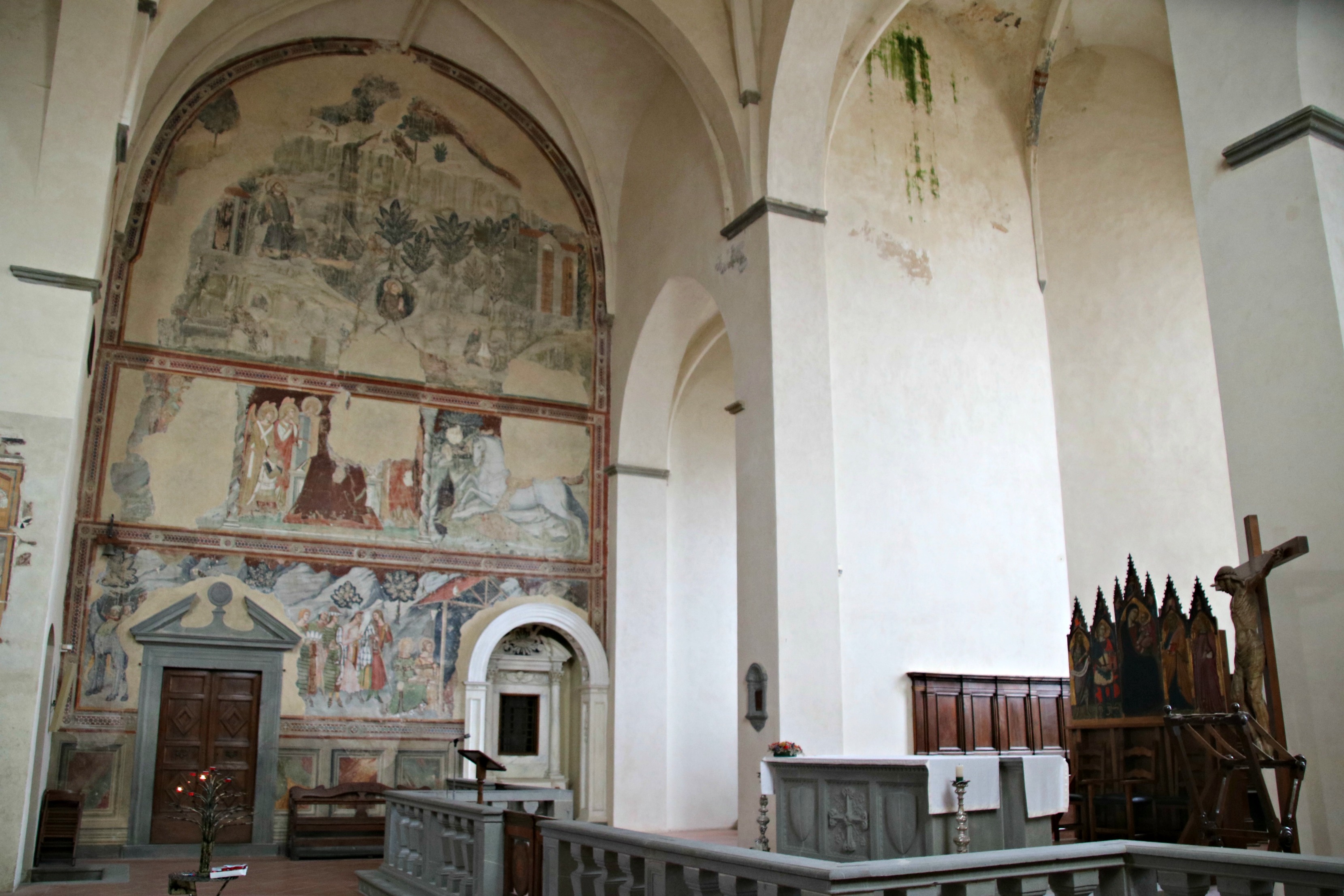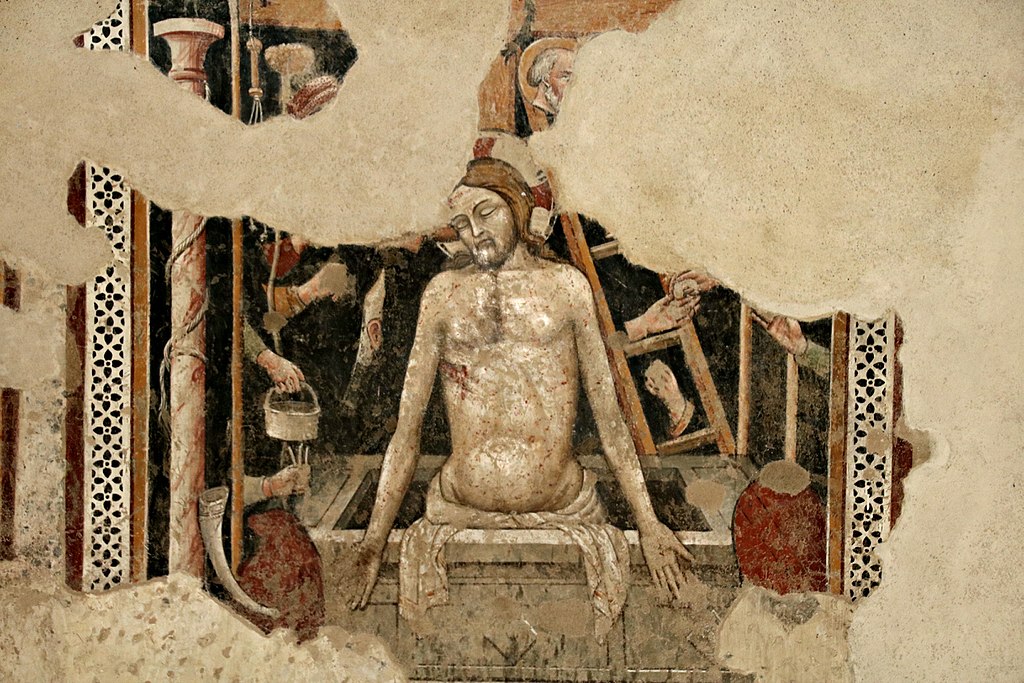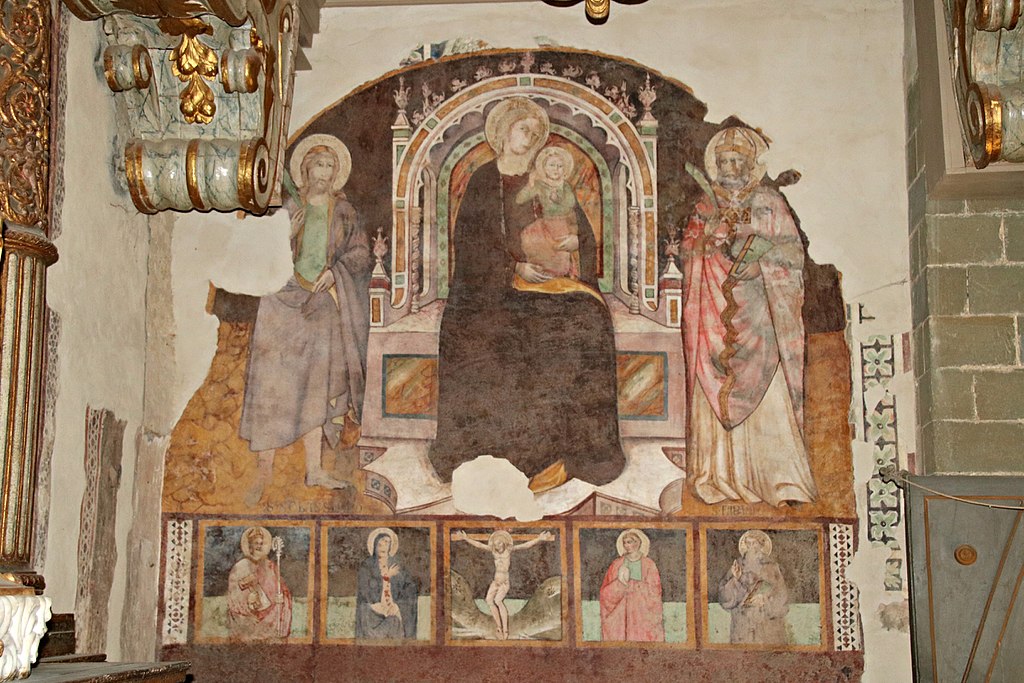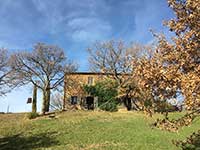Lucignano, church of San Francesco |
Lucignano is a remarkably conserved medieval walled hill-top village, elliptical in shape. Awarded with the “Orange flag” by the Touring Club, it has a remarkable artistic heritage.
History The church is first mentioned as belonging to Frati Minori in 1289. The church with a bicolored (travertine marble and pietra serena) facade has a rose window in the center. The rounded portal is highly decorated with spiraling pilasters. The apse has a series of vaults with Gothic tracery. Nineteenth century restoration by Castellucci removed much of the plaster obscuring earlier frescoes, and altars that were shuttering windows.[4].
|
||
Interieur van de chiesa di San Francesco, Lucignano, met links het grote fresco van de Sienese school, en rechts het silhouet van de polyptiekvan Luca di Tommè (1)
|
||
The interior with a single nave has a collection of frescoes from the 15th and 16th centuries. Including Scenes from the Life of St Francis by Bartolo di Fredi and Taddeo di Bartolo. The first altar right of main altar has a fresco depicting a grim Triumph of Death by Bartolo; in the painting, death as a horseman, dressed in black on a black horse, bears upon two conversing noblemen. This fresco is attributed to the Sienese painter Bartolo di Fredi, and scholars have dated it around 1380 (2). The horrible woman of Lucignano draws a bow, but has a scythe too, as in Palermo. |
Trionfo della Morte On the high altar it is still possible to admire a polyptych by Luca di Tommè (ca. 1330-1389), in which dominates a splendid enthroned Virgin and Child surrounded by Saints John the Baptist, Michael the Archangel (who holds the Castle of Lucignano), Peter, and Catherine of Alexandria [5]. Originally the church walls were completely frescoed but only e few frescoesand some fragments remain. The right side of the transept is entirely frescoed with stories of St Francis, Saints, and by a Visit of the Three Wise Men. Attributed to Bartolo di Fredi and Taddeo di Bartolo, they show moments in the life of Saint Francis.
|
||||
Parte degli affreschi attribuiti a Bartolo di Fredi e Taddeo di Bartolo, Chiesa di San Francesco (Lucignano) (1)
|
||||
Finally, two other things in the church deserve a remark: the Virgin of Crespignano, a 14th century wooden statue and the Organ, now placed in the counter-façade in a wooden choir of the baroque epoch. Built during the second decade of the 16th century, it is one of the oldest functioning organs of Italy [5].
|
||||
Mappa Lucignano, chiesa di San Francesco | Ingrandire mappa |
||||
|
||||
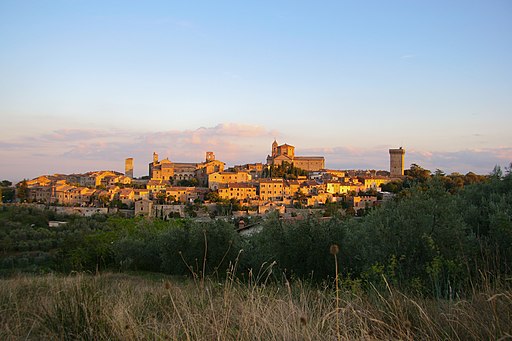 |
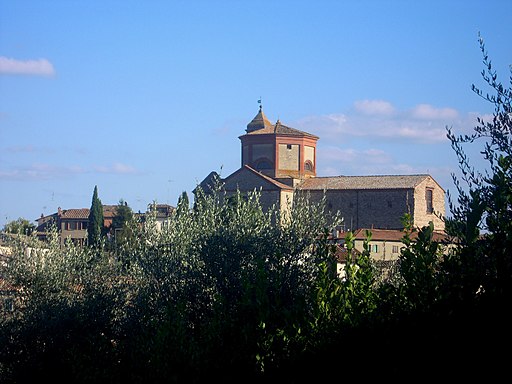 |
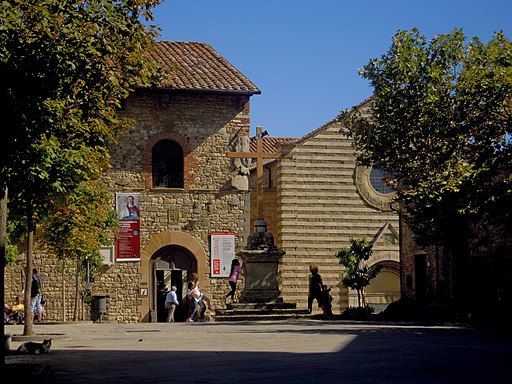 |
||
Lucignano, gezien vanaf het Fortezza Medicea
|
Lucignano, panorama del Centro storico | Palazzo Comunale | ||
|
||||
 |
 |
 |
||
Il trionfo della morte di Bartolo di Fredi (1360 ca.)
|
Chiesa San Francesco (Lucignano), transetto | Chiesa San Francesco (Lucignano), transetto | ||
 |
 |
 |
||
Frammenti delle storie di S. Francesco, affrescchi sulla navata sinistra in lato, chiesa San Francesco (Lucignano)
|
Madonna in trono, chiesa San Francesco (Lucignano)
|
|||
Frammenti degli affreschi attribuiti a Bartolo di Fredi e Taddeo di Bartolo, Chiesa di San Francesco (Lucignano)
|
||||
|
||||
One of Tuscany's best kept secrets is the beautiful valley sheltering this recently renovated 18th century farm house, Podere Santa Pia. Located on the outskirts of Castiglioncello Bandini, in a hilly and unspoilt land, Podere Santa Pia is an artistic property, perfect for relaxing and enjoying the splendor of the Maremma hills of southern Tuscany.
|
||||
Casa Vacanze in the Tuscan Maremma
|
||||
Podere Santa Pia |
Colline sotto Podere Santa Pia
|
Shadows on Podere Santa Pia | ||
|
||||
Questo articolo è basato sull'articolo Lucignano dell' enciclopedia Wikipedia ed è rilasciato sotto i termini della GNU Free Documentation License. |
||||

